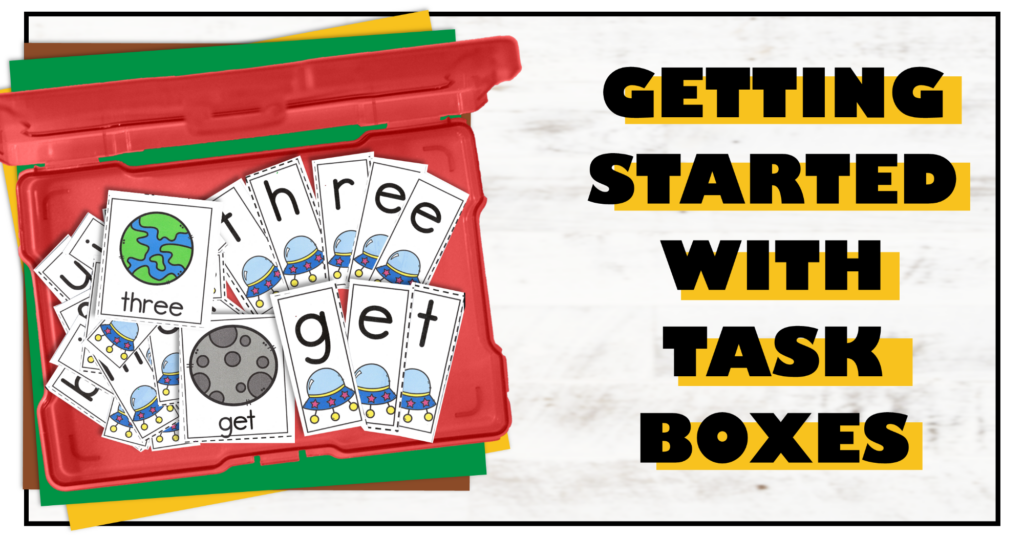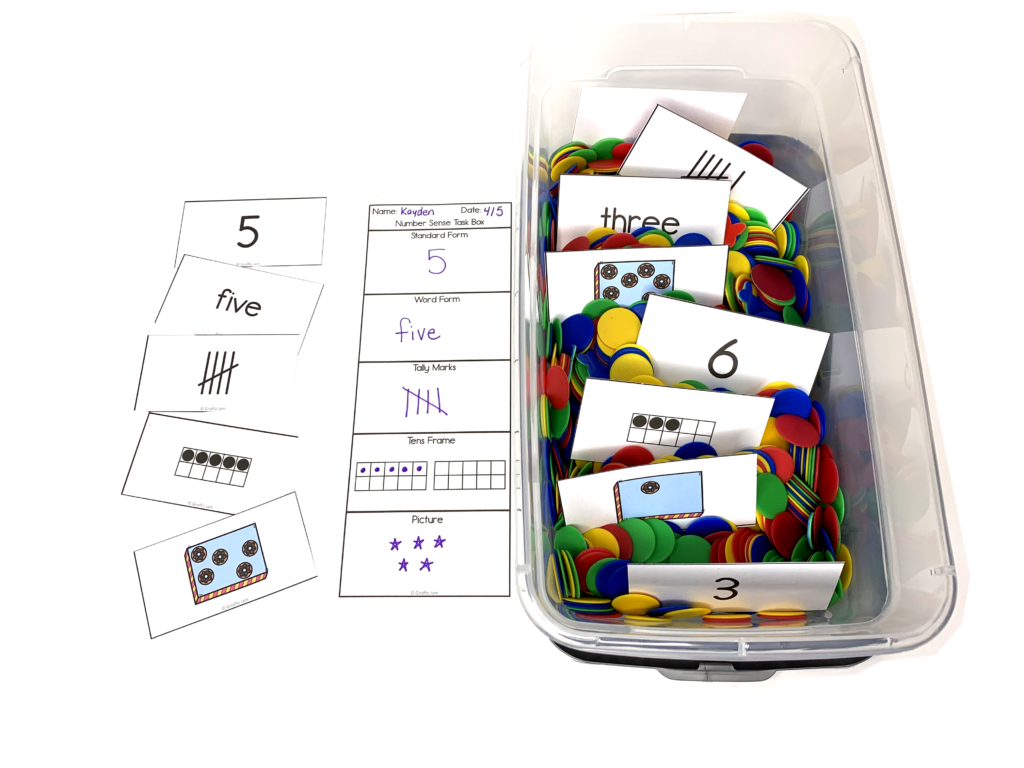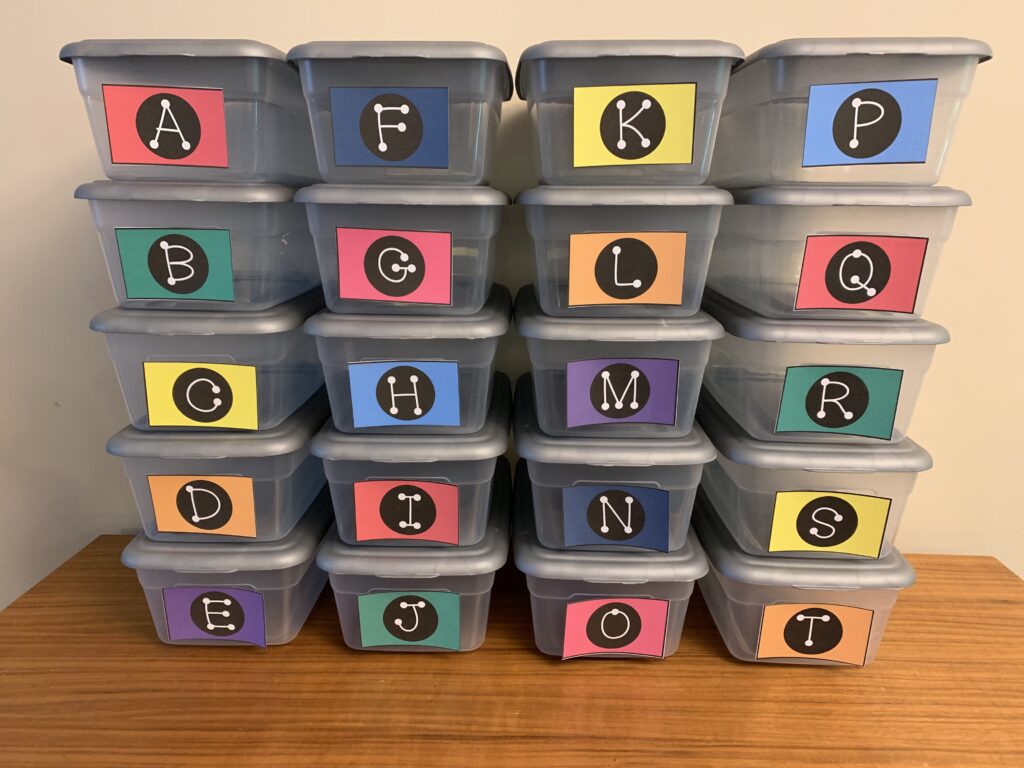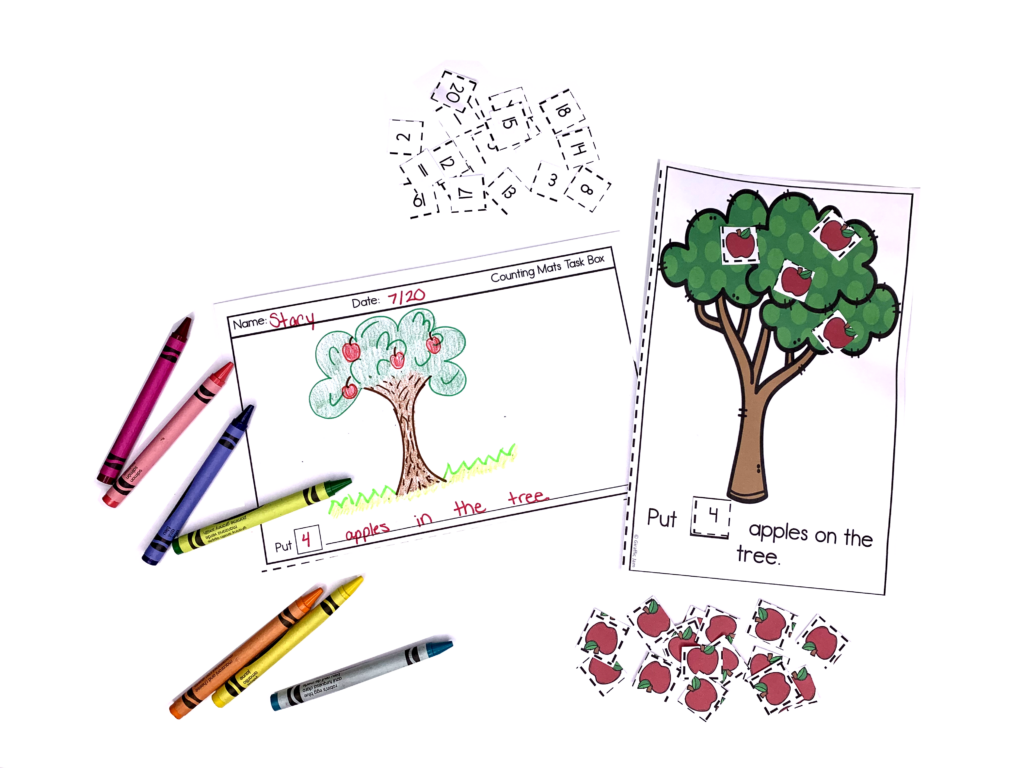
Getting started with task boxes can be DAUNTING. But, it doesn’t have to be. Take a deep breath and let’s get started together!
Start by identifying the specific goals and objectives you want to achieve with task boxes. Consider the skills you want to reinforce, the subjects you want to cover, and the needs of your students. This will guide your selection of tasks and activities.
Example Goals:
Once you’ve identified your goals, gather the materials and supplies needed to create your task boxes. Consider what you already have in your classroom and what additional items you might need.
Common Materials:
Tip: Start with a few basic tasks and gradually expand your collection as you become more comfortable with using task boxes.

I LOVE using basket fillers to add things for students to dig through to find their pieces!
(Also – check out the recording sheet included so students have something to take home and share with families!)
Design tasks that align with your goals and objectives, ensuring they are appropriate for your students’ age and skill level. Assemble each task box with all necessary materials and clear instructions, making it easy for students to use independently.
Steps to Assemble:
Effective organization and storage are key to making task boxes easy to use and manage. Decide on a storage system that keeps boxes accessible and organized.
Storage Ideas:

I like to use letters on mine, and assign each student a letter. I made a quick schedule on the board with student names and a letter (Johnny – A, Susie – B, etc.) This gets students also practicing their letter identification!
When my materials aren’t put out for students, I keep them in envelopes like this. These fit so easily in a file cabinet or in a giant tub. I can just grab the one I want and dump it in a box!

Introduce task boxes to your students with a clear explanation of their purpose and how to use them. Demonstrate how to choose a task, follow instructions, and complete the activity independently.
Introduction Tips:
Tip: Start with a small group or one-on-one demonstration before rolling out task boxes to the entire class.

Model. Model. Model. Show students EXACTLY what their station should like while they are working and when they are done.
Integrate task boxes into your daily or weekly routine to ensure consistent use and practice. Consider how they can fit into different parts of your schedule, such as during morning work, center time, or as part of your homework routine.
Integration Ideas:
Tip: Rotate task boxes regularly to keep activities fresh and engaging, and to address different skills and concepts.
Regularly monitor and assess student progress with task boxes to ensure they are meeting their intended goals. Observe how students interact with the boxes, review completed tasks, and adjust activities as needed to match student progress and needs.
Assessment Tips:
Tip: Use a checklist or tracking sheet to document student use of task boxes and any noted improvements or challenges.
Conclusion: Embracing the Power of Task Boxes
Task boxes offer a flexible, effective, and engaging way to enhance learning and classroom management. By following these steps to get started, you can create a system of task boxes that supports independent learning, reinforces key skills, and simplifies your teaching routine. Embrace the power of task boxes, and discover how they can transform your classroom into a more organized, productive, and enjoyable learning environment for both you and your students.
Integrate task boxes into your teaching strategy today and experience the benefits of organized, hands-on learning that meets diverse student needs and fosters a positive educational experience.